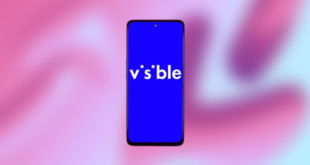Our Verdict
Best for:
I’ve spent the majority of my life running on and off. Whether it has been for school, fun or a way to exercise, running has always been my go-to. I’ve also always felt my best during the periods I was running consistently and it isn’t just about the physical benefits but also my overall mood. The same can be said for my sleep — the frequent exercise did wonders on calming my brain each night. Popular sleep trackers seem to have merged the two aspects, like the Whoop, so you can easily track both your activity levels and their impact on your sleep.
Read more: Best Running Shoes for Women
I wore the Garmin Forerunner 45S for a year and tracked my daily miles and my sleep each night. This older model, which is now discontinued, gave me a first glance into my sleep data and helped me realize that I wasn’t getting enough deep sleep. But as an avid napper, I noticed that the Forerunner wasn’t taking into account those short periods of shut-eye.
A few months ago, Garmin came out with its latest Forerunner. The Forerunner 165 has new sleep features like nap detection, Sleep Monitoring and Sleep Score. I ran and slept with the Forerunner on for a month. Here are my honest thoughts on the wearable that tracks and trains and how it compares to older Forerunner versions.
What is the Garmin brand?
Garmin has been a leader in smartwatches and fitness trackers for almost three decades. Growing up, my mom trusted only her Garmin watch and its cutting-edge GPS navigation while she trained for marathons. The brand is still highly thought of today and is used by athletes, hikers, swimmers, cyclers and everyday fitness enthusiasts alike.
Not sure which Garmin watch is for you? Take their quiz.
Garmin Forerunner 165
I received the new Garmin Forerunner at the end of March. It went straight out of the box to my left wrist. Here’s what I first thought of the Forerunner 165 and what I came to love after a month of testing.
First impressions
The Forerunner 165 is on the left, and the Forerunner 45S is on the right.
As I hold both Forerunners in my hand, the most noticeable difference is the size. The screen on the new Forerunner is a few centimeters larger and a bit heavier than the older version. The bands on the newer smartwatch can lie flat, while the bands on my older one are connected to the screen. Although, both watches feel the same on my wrist.
A great upgrade to the new Forerunner is that it can now last up to 11 days between charges. My older smartwatch has a battery life of only seven days. I also noticed that the buzzing (which alerts you to notifications) is significantly quieter on the new Forerunner.
Thankfully, the waterproof rating (5ATM) is the same. Both are safe to use in the rain and snow or while showering, swimming, diving into water or snorkeling up to 50 meters.
Features I love
After a month of testing, there are many features that I really enjoy. In addition to the previous features available on the older Forerunner models, such as heart rate, steps, stress levels, pace, speed, heart rate, elevation, cadence, heart rate zones, calories burned and sleep tracking, the Forerunner 165 has new features that I really enjoy. Here are a few other stand-outs:
- AMOLED touchscreen
- Scrollable screen with all my metrics
- Automatic nap detection
- Sleep Coach
- Sleep Score
- Vo2 Max score
- HRV status detection
- Body battery
- Women’s health tracking
- Race time predictor
- Recovery predictor
- Workout suggestions
- Sleep mode
- Morning Report
- Find my phone
Nap detection
One of my favorite features is nap detection. With my older Garmin, I would often take naps during the day that it would either not detect or add to my overall hours slept from the night before. I had a hard time determining how long I was actually asleep. With nap detection on the Forerunner 165, the watch automatically tracks my naps and even has its own category in my metrics.
Another cool factor of nap detection is that it suggests how long your naps should be, in addition to giving advice. For example, once my watch recorded a nap that was around 50 minutes. It told me that while it lowered my stress levels and recharged my Body Battery (another feature that measures personal energy), I should aim for my naps to be 30 minutes or less. As a sleep expert, this is accurate advice as any nap over 30 minutes can interrupt your sleep. The nap detection feature will also then recommend how much sleep I should get the night after my nap. If I sleep too long during the day, it tells me how many minutes of less sleep to get at night to balance me out.
Garmin’s other sleep details
In addition to nap detection, there are a few more sleep features that I also tested with the Forerunner 165.
Sleep Score
Each morning, I receive a Sleep Score for my sleep the night before. That score can be anywhere from 0 to 100, and it depends on the hours I slept (based on age-related recommendations), time spent in each sleep stage, stress, heart rate and interruptions. My scores are often in the 70s, and I have yet to reach a perfect 100. I’m often penalized for stress during my sleep and not getting enough deep sleep each night.
Sleep Coach
Garmin’s Sleep Coach gives you tips to make sure you are getting your optimal amount of sleep. In addition to displaying the number of hours of sleep you should aim to hit each night, it also gives you insight into your sleep. The metrics that influence the recommendations from the Sleep Coach include age, activity history, sleep history, naps and HRV.
That brings me to my criticism of the Sleep Coach system — it doesn’t seem to take into account my gender. Each day, my Sleep Coach recommends a typical 8 hours based on my age. However, menstruating women need more sleep, especially since this phase of the menstrual cycle can cause sleep disturbances. When I sleep longer than the recommended 8 hours or take a nap during the day because I’m exhausted, the Sleep Coach will tell me I need to sleep less that night. While in theory that might work, it makes me feel like I’m forever playing catch-up with my sleep.
I’ve come to realize that I need a bit more sleep than the average 8 hours. That might be true for you too. While the Sleep Coach feature isn’t more personalized yet, I hope that it might be in the future.
HRV status
HRV, or heart rate variability, is the measure of time between heartbeats. The time between heartbeats can change, and this slight irregularity is normal. HRV status is measuring how your body responds and adapts to stress. A higher HRV status may indicate that your body is recovering well.
When I first started tracking, my HRV levels were very low. My other sleep tracker, the Eight Sleep Pod 3 Cover was giving me the same results. As you can see, my HRV has slowly increased over the last month. This could have been due to my stress levels decreasing and finally getting used to my new sleep environment (as I had been moving the month prior). It’s also likely a result of my increased activity levels over that time period. However, I generally have a lower HRV status.
Read more: Best Strap Heart-Rate Monitors
Recovery
If you’re interested in heavy exercise and recovery time, this feature is for you. After each workout, this feature gives me an estimate of how long I should take to recover. Depending on the intensity of the activity, it can be anywhere from a few hours to over a day. However, I like that the recovery time decreases if I get good sleep the following night.
How does it compare to other sleep trackers?
I have tested a few sleep trackers over the years. Here’s how the Forerunner 165 compares to my other favorite sleeper trackers.
Eight Sleep Pod 3
The Eight Sleep Pod 3 Cover is a sleep tracker that goes over your bed like a mattress cover. It heats and cools you throughout the night according to your own preferences that you input into its app. If you sleep with a partner, you can customize each side of the bed to your liking. The Pod tracks similar metrics as Garmin, such as heart rate, heart rate variability, breath rate, bedtime routine, the time spent asleep, sleep quality and the amount of time spent in each sleep stage. It also gives you a Sleep Fitness score, which is very similar to Garmin’s Sleep Score. Yet, I often get 100s with Eight Sleep but 70s with Garmin.
The Pod 3 Cover is for those who don’t want to wear a wearable to bed, but it’s not for those on a budget. I’d recommend Eight Sleep only to someone very serious about their sleep and their sleeping temperature and willing to spend quite a bit of money.
Garmin Forerunner 45S
As I have stated before, I have been a consistent Garmin user for over a year now. My older Garmin Forerunner 45S was the perfect beginner model for me while I was just getting back into running. It also was the first sleep tracker to show me how long I was spending in each sleep stage. That data showed me that I wasn’t getting enough deep sleep. While the Forerunner 45S doesn’t have as many sleep features as the 165, it’s great for those who want to try out a sleep tracker for the first time. It has now been discontinued, but you can still get your hands on Garmin 45.
How much is the Garmin Forerunner 165?
| Smartwatch | Price |
|---|---|
| Garmin Forerunner 165 | $199.99 |
| Garmin Forerunner 165 Music | $249.99 |
The music add-on to the Garmin Forerunner 165 is an extra $50. This extra feature lets you download up to 500 songs from your Spotify or Amazon Music account (subscription not included) directly to the watch. With wireless headphones, you can listen and workout without your phone.
Is the Garmin Forerunner 165 worth it?
I love running in my Topo shoes and with my Garmin watch.
After using the Garmin Forerunner 165, I completely find it worth it. For me, it’s the perfect tool to help track my miles, recovery and sleep — the most important factors to me when it comes to being active. However, the price tag might deter some people. If you’re considering the Forerunner 165 but are put off by the price (though I will say that some Garmin watches are in the $400 range), I don’t recommend getting the Music feature and saving $50. That extra feature isn’t necessary, and if you’re like me and run with your phone, you won’t need to use it. Overall, the newest Forerunner is pricey but a great device for those looking to bridge the gap between their fitness and sleep.
Still unsure if this Garmin is right for you? Here are a few reasons to try the Forerunner 165 or another sleep and fitness tracker.
You should try the Garmin Forerunner 165 if:
- You’re fairly active and want a deep dive into your sleep
- You don’t mind wearing a watch to bed
- You’re training for a race and want to see your sleep’s effect on your recovery
- You want a Forerunner with advanced technology
You should try an older Forerunner model or another sleep tracker if:
- You would rather focus on fitness goals than your sleep
- You’re looking for an entry-model to try a Forerunner for the first time
- You would rather track your sleep with a ring than a watch
- You’re looking for a fitness and sleep tracker that’s in budget
 meganwoolsey Home
meganwoolsey Home



